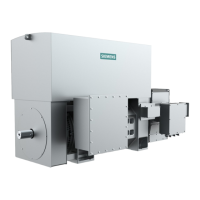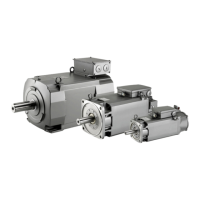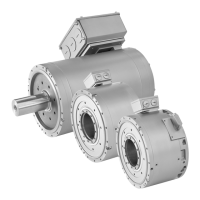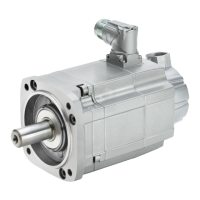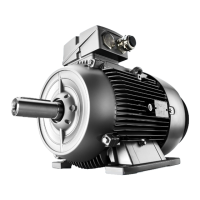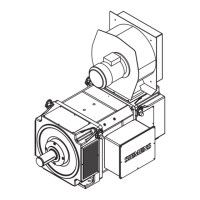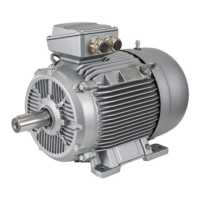Motor components, characteristics and options
4.2 Cooling
SIMOTICS M-1FE2 built-in motors
Hardware Installation Manual, 04/2020, A5E50074509B AA
65
4.2.2 Cooling circuit
Note
The electrochemical p
rocesses that take place in a cooling system must be minimized by
choosing the right materials.
Avoid mixed installations (i.e. a combination of different materials, such as copper, brass,
iron, or halogenated plastic (PVC hoses and seals)).
Cool the built-in motor using a semi-open or closed cooling circuit.
Table 4- 4 Description of the cooling circuits
Closed cooling circuit The pressure equalization tank is closed and possesses an overpressure
valve. Oxygen cannot enter the cooling circuit. The coolant is only routed
through the motors and converters as well as through the components
required to dissipate heat.
Semi-open cooling circuit Contrary to closed cooling circuits, oxygen can enter the coolant through
the pressure equalization tank.
Note
Laying the cooling water pipes
Electrically conductive cooling water pipes must not come into contact with live components.
•
Lay only insulated cooling water pipes or insulate the cooling water pipes subsequently.
Fasten the cooling water pipes mechanically.
All components in the cooling system (motor, heat exchanger, piping system, pump,
pressure equalization tank) must be connected to an equipotential bonding system.
● Install the equipotential bonding properly with a copper busbar or copper strand with the
appropriate cross-section.
Materials used in the motor cooling circuit
● Match the materials in the cooling circuit to the materials in the motor.
Table 4- 5 Materials used in the motor cooling circuit
Steel or aluminum (depending on the type)
O rings FKM (ISO 1629)

